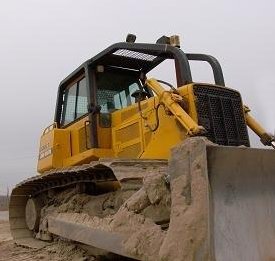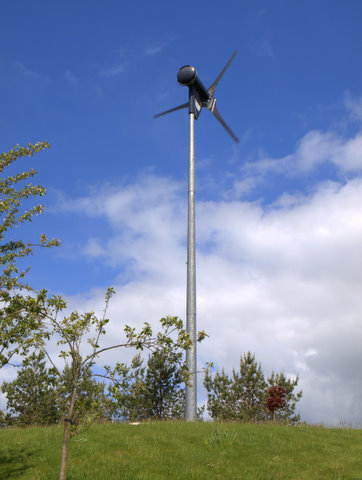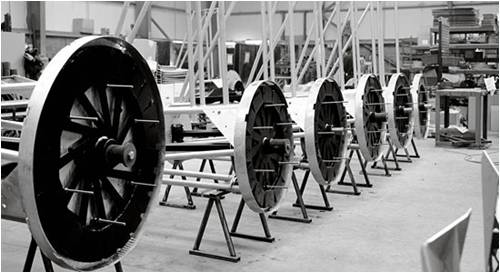
|

|
Forum Index : Windmills : Ferrite VS Neodymium strength
| Page 1 of 2 |
|||||
| Author | Message | ||||
| faroun Regular Member Joined: 18/09/2008 Location: Posts: 62 |
Ferrite VS Neodymium strength I am trying to establish the ratio in strength between the 2 types of magnets. from what I read is that the Ferrite has a larger flux range vs the Neo. but I need to know the strength ratio? can anyone help me with this little challenge, size for size what is the strength between the 2 types? 2to1 3to1 or 5to1? what all this info mean?! Ferrit Neo thanks sam Many Ideas One Brain. http://www.wrapwind.com |
||||
| Gizmo Admin Group Joined: 05/06/2004 Location: AustraliaPosts: 5078 |
Looking at those links, the Neo's have about 10 times the magnet strength, which I've heard elsewhere too. As to what all the different properties mean ( Remanence, Coercivity, etc ), I have no idea, maybe someone else can help. 10 times the strength doesn't usually mean you can expect 10 times the power from a alternator though. It depends on the alternator type and layout. A F&P Smartdrive converted from ceramic to Neo will only give about 1.5 to 2 times the power. Glenn The best time to plant a tree was twenty years ago, the second best time is right now. JAQ |
||||
| Warpspeed Guru Joined: 09/08/2007 Location: AustraliaPosts: 4406 |
Magnetic units are like Voodoo, too many different units and ways to express the same thing which makes understanding the whole mess a real challenge. Remanence is the magnetic flux remaining after you remove an initial magnetizing source. Think of it as magnetic memory. Basically if you take a magnetic substance, energize it with another magnet, what remains is the remnant flux. Or what happened to your now magnetized screwdriver ! The way to manufacture a magnet is to energize it with a very powerful electromagnet up to or beyond saturation flux density, and then switch off the power. The remnant flux in Gauss or Tesla's is the value of remaining flux density of the permanent magnet you end up getting. Yes two completely different units for exactly the same thing. This is the important value for the strength of a permanent magnet. You can only actually achieve that full strength (and flux density) with a completely closed magnetic circuit around the magnet, with no air gap. An electrical analogy of this, might be the dead short circuit current capability of a given battery after it has been charged. A battery would not be too happy about that situation, but a magnet will revel in it. Knowing the remnant flux is very useful in a completely closed magnetic path with no airgap. Just as knowing the cranking amps rating of your car battery might be a better measure of performance than just knowing it was a 12v battery, maybe a very small 12v battery. Coercivity or Magneto Motive Force is measured in Orsteads, which is rather like the magnetic equivalent of voltage. It is a measure of how much flux a magnet can force around a given magnetic path of known magnetic resistance (reluctance). All this is like a sort of magnetic Ohms law, where Magneto Motive Force works the same as Electro Motive Force. It can be helpful to know this Magneo Motive Force figure, if you plan to have an open magnetic path with an an airgap. Another way to visualize Magneto Motive Force, is that MMF is proportional to Ampere Turns in an electromagnet, but the flux density you end up with will depend on the magnetic path. This is a very difficult topic to explain.... Rare earth Neodymium magnets kill ferrite in every respect except cost. Ferrite is perfect for fridge magnets, hehehe. The problem with understanding magnetics are the unbelievably baffling and confusing units of measurement. It is like introducing MHOs or Siemens of conductance into a simple Ohms Law Problem instead of a figure for resistance. If you don't recognize some of these really odd units for what they are you are screwed. Cheers, Tony. |
||||
| VK4AYQ Guru Joined: 02/12/2009 Location: AustraliaPosts: 2539 |
Hi Warpspeed It sounds like it was a standard set by a politician or a Pubic Serpant designed to allow variance without any meaning and to confuse us simple folk. All the best Bob Foolin Around |
||||
| Warpspeed Guru Joined: 09/08/2007 Location: AustraliaPosts: 4406 |
Many of the early scientific pioneers had a go at trying to understand the mysterious connection between magnetism and electricity over at least the last couple of hundred years. Each came up with different test methods, explanations, and units of measurement. There is permanent magnetism, electro magnetism, magnetic induction, in both dc and ac circuits. Many of the observed effects can be curiously non linear which further complicates things. And then to make it even more interesting there are imperial and metric units. A real dog's breakfast of units. Some units are reciprocals. You could (for example) measure the length of your manhood in micro cubits or fractions of a furlong. Probably to some people both are perfectly logical, obvious, and legitimate ways to express the length of an Imperial British Standard Willy. Then the Americans will probably come come along and call it a Johnson, and express it in some completely unrelated units. So Webers per square meter for flux density should be perfectly obvious, as should circular mils per amp for current density. Simple, eh ? Trying to get your head around this stuff by reading books can quickly drive you insane. Cheers, Tony. |
||||
| scoraigwind Newbie Joined: 23/09/2009 Location: United KingdomPosts: 21 |
Ferrites beat Neo magnets for durability too. The lifetime kWh you produce depend on the hours of operation and if the magnet rotors get killed by corrosion after five years (during which the price of Neos has rise be a factor of five) then ferrites start to look attractive. Ferrites seem to go on for ever. If you use a heavy dose of ferrites (thick magnets) then you can achieve about half the flux density that you normally would with Neos. This means half the voltage at a given speed and hence half the power all else being equal. Your losses (heating of the stator due to current) will be the same so the efficiency is lower in this scenario, but the cooling issues will be the same. Hugh Piggott |
||||
| Warpspeed Guru Joined: 09/08/2007 Location: AustraliaPosts: 4406 |
If your flux density is only half, then you need twice as many turns on each coil for a given operating rpm and rotor diameter to reach target voltage. Twice the turns of half the wire cross sectional area increases the resistance (and the I^2xR ohmic power losses) four times. For survival in a constantly wet environment, both magnets and coils should be fully potted in epoxy, and at the very minimum housed in a drip proof enclosure. When designing transformers, motors, generators or any magnetic machine, the highest possible magnetic flux density (just short of saturation) will always yield highest efficiency. It is well worth chasing. Cheers, Tony. |
||||
| scoraigwind Newbie Joined: 23/09/2009 Location: United KingdomPosts: 21 |
So - once again - you can have half the power by using half the current (this time) with the same loss as before. Not great, but if you build big the cooling is easy and power is cheap in the stronger winds anyway. In low winds the losses are minimal. And the extra resistance in the stator actually helps the blades to work at variable speed (optimising their efficiency in a low tech way). My environment is not constantly wet but it is maritime and over the years I am getting bored with the fragility of the neo magnets. It's not so much when they fail as when, even when potted in Vinyl ester. On a good day I would agree with you that they should last forever if properly sealed and protected and I strive ever harder to do this but at the same time I look at the older ferrite turbines that go on cranking out the power for over ten years and the magnets are as good as new. And they cost peanuts. Hugh Piggott |
||||
| rissole Newbie Joined: 10/05/2011 Location: AustraliaPosts: 15 |
 morning all! I came accross a site the other day where a guy was offering to get neos made for f & ps, could anyone point me to it. morning all! I came accross a site the other day where a guy was offering to get neos made for f & ps, could anyone point me to it.
BTW this is my first post on this forum. Glen you have a great forum here! next time I post I will introduce myself and my vvvawt (almost finished) haveto duck off to work now! cheers Rusty |
||||
| Warpspeed Guru Joined: 09/08/2007 Location: AustraliaPosts: 4406 |
Hugh, I agree that the efficiency of many renewable energy devices need to be looked at in a rather different way, when the "fuel" is free as wind certainly is. Cheers, Tony. |
||||
niall1 Senior Member Joined: 20/11/2008 Location: IrelandPosts: 331 |
hi Hugh most weekends i drive by a big proven downwind machine .... every time i pass it i cant help thinking about its big ferrite mags and if i,m right in thinking it has a laminate axial stator ...not sure about that though seems to beggar belief but its certainly an eye catcher niall |
||||
| Gizmo Admin Group Joined: 05/06/2004 Location: AustraliaPosts: 5078 |
Yes I agree. Its like solar cell development. A lot of research is put into making solar cells more efficient, meaning they give more power per area. But I think more research should be put to wards making solar cells cheaper, even if less efficient. A 10% efficient solar panel for $1 is better than a 20% efficient panel for $4. For the same money, the cheap panel covers 4 times the space of the efficient panel, but delivers twice the power. Since the average home roof has more than enough space anyway, if it means giving me the same power for half the money, then I would be happy to install 4 times the number of panels. Ferrite magnets are dirt cheap compared to Neo's. The Axial Flux alternator we are all familiar with was designed to make the best use of the expensive Neo magnets. This does mean a compact coil arrangement, making the best use of the concentrated flux, but causing some heat dissipation issues. Maybe a redesign based on Ferrite magnets could prove worth while. Certainly cost would be down, and coils would be bigger, the diameter bigger, cooling would be better, and as Hugh points out, Ceramics last indefinitely. Glenn The best time to plant a tree was twenty years ago, the second best time is right now. JAQ |
||||
| VK4AYQ Guru Joined: 02/12/2009 Location: AustraliaPosts: 2539 |
Hi Hugh I agree that the compact power of neo magnets is an advantage to get a lot from a little, but it brings in other problems such as burnt out coils and corrosion, I am a great believer of making things bigger and lighter loaded for reliability. 40+ years ago I made a slow speed generator out of 2 inch diameter bar magnets and it is still going, it would make 5000 watts day and night 24 /7 It was made for a VAWT I was making at the time, it would be to heavy for a HAWT but for what it is doing it is ideal, it needs a lot of torque so the VAWT is ideal. The thing now is to find a good supplier of alternate magnets. All the best Bob Foolin Around |
||||
mac46 Guru Joined: 07/02/2008 Location: United StatesPosts: 412 |
Everyone, I think ceramics would work best in coastal areas for sure, but ferrite, is even less expensive and easy to be had. Perhaps a wire coil around the magnet to make it an electro magnet for even more strength...could use this as a device for controling top speed in windy times, and other applications too. Just thinking outloud...sorry, ....Mac46 I'm just a farmer |
||||
niall1 Senior Member Joined: 20/11/2008 Location: IrelandPosts: 331 |
mmm....so is it the problem with ferites that laminate needs to be incorporated to focus the limited power of the mags ..the awp machine accomplishes this but its a radial alt ...not easy to make niall |
||||
| Gizmo Admin Group Joined: 05/06/2004 Location: AustraliaPosts: 5078 |
The advantage of cheaper magnets is you can buy more of them. More magnets around a stator means more coils, and more coils means a higher AC frequency. The faster the magnets pass the coil the higher the output power, and more magnets/coils accomplishes this. More magnets/coils does mean a bigger diameter alternator though. You could use narrower longer magnet combinations, say instead of a single 50mm diameter magnet, 4 25mm magnets in a row give a 100mm * 25mm magnet, so you use a narrower rectangle shaped coil, making it easier to fit more around the circumference, and the long rectangle shaped coil also means more copper under the magnet. Glenn The best time to plant a tree was twenty years ago, the second best time is right now. JAQ |
||||
| Jarbar Senior Member Joined: 03/02/2008 Location: AustraliaPosts: 224 |
Niall,could you get a photo of that downwind model you see. Anthony. "Creativity is detirmined by the way you hold your tounge".My Father "Your generation will have to correct the problems made by mine".My Grandfather. |
||||
| shawn Senior Member Joined: 30/03/2010 Location: New ZealandPosts: 210 |
Interesting discussion! how many f&p motors do you think have been built using ceramics I bet they did there homework and decided to build a little bigger motor and use ceramics compared to a small neo motor for the same power. and we all know they just go for ever and ever!! Not the best performance no, but go and go and better for mass production (cost) just my two cents |
||||
| Gizmo Admin Group Joined: 05/06/2004 Location: AustraliaPosts: 5078 |
Thats a good point Shawn. Most permanent magnet motors are using ceramic magnets. I know from the comments posted o this forum over the years that neo magnets can easily saturate a laminated iron core. Fitting rare earth magents to a F&P hub will give a gain in power, but not 5 to 10 times that you would expect, closer to 1.5 to 2 times the power from the factory ceramics magnets. The neo magnets saturate the iron core, and a lot of the flux is wasted. Once a core is saturated, adding more flux wont increase power. Its proven easier to increase the F&P output with series caps and a few other tricks, leaving the original ceramic magnets in place. The axial flux alternators dont have a iron code, so dont suffer from saturation. Glenn The best time to plant a tree was twenty years ago, the second best time is right now. JAQ |
||||
niall1 Senior Member Joined: 20/11/2008 Location: IrelandPosts: 331 |
Anthony heres some pics of that proven machine ...nobody who knew specs about the machine was at home at the time ..friendly people though ... 
it (seems) to be the 5k machine , but it,s the first proven i,ve seen up close so not sure about this one thing very noticeable was how smooth the alt was at cut in...you could feel hardly any vibration in the pole , yet the alt was humming away not much "helicoptering" from mast shadow either ...just sounded like a regular upwind machine i want one ..... 
pole does flex a little...shes a big girl found this pic on the proven site....seems to show different combinations of ferrite numbers on different alts 
later edit...the one thing i really wanted to see was the coning/blade twist furling method it uses ....not today though niall |
||||
| Page 1 of 2 |
|||||